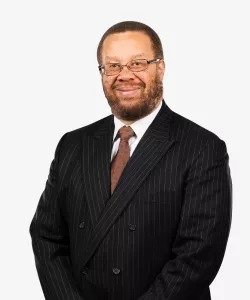Top NLRB Lawyer Says That College Football Players Are Employees
Last week, in a memorandum to NLRB regional directors, officers in charge, and resident officers, Board General Counsel Jennifer Abruzzo said scholarship athletes who generate millions for their schools “are employees under the NLRA.”
Those players are often called “student-athletes.” But Abruzzo refrained from using the term because “it was created to deprive those individuals of workplace protections.”
According to Abruzzo, like common law employees, scholarship athletes perform a service for their school and the NCAA in return for compensation and are subject to their control. Specifically:
- They play football, which generates tens of millions of dollars in profit, provides an immeasurable positive impact on their school’s reputation and boosts student applications and alumni donations.
- They receive significant compensation, including up to $76,000 per year, to cover their tuition, fees, room, Board, and books, plus a stipend to cover additional expenses.
- The NCAA controls their employment terms and conditions, including their maximum practice and competition hours, scholarship eligibility, compensation limits, minimum grade point average, and restrictions on gifts and benefits that the players may accept. Also, the NCAA ensures compliance with its rules through its compliance assistance program.
- And, the players’ school controls their work on the field as well as facets of their daily lives.
Thus, Abruzzo concluded, those players “clearly satisfy [the NLRA’s] broad definition of employee and the common law test.” So, they “should be protected by Section 7 when they act concertedly to speak out about their terms and conditions of employment, or to self-organize, regardless of whether the Board ultimately certifies a bargaining unit.”
To bolster her conclusion, Abruzzo pointed to significant developments in the law, NCAA regulations, and the societal landscape that undermine the traditional notion that all players at academic institutions are amateurs.
- The Supreme Court has (1) recognized that college athletics generate profits; and (2) rejected the NCAA’s anti-trust defense based on the notion that college athletes are amateurs.
- The NCAA has amended its rules to allow players to collect compensation from those who wish to use their name, image, and likeness, which opens the door for players to profit from endorsements, autograph sales, and public appearances, among other ventures. That, according to Abruzzo, makes the players “much more similar to professional athletes who are employed by a team to play a sport, while simultaneously pursuing business ventures to capitalize on their fame and increase their income.”
- And, players have been engaging in collective action at unprecedented levels, including banding together to speak out about racism at their institutions and demand change. Said Abruzzo, “[a]ctivism concerning such racial justice issues, including openly supporting the Black Lives Matter movement, directly concerns terms and conditions of employment, and is protected concerted activity.”
Because players at academic institutions are employees, Abruzzo concluded that “misclassifying them as ‘student-athletes” and leading them to believe that they are not entitled to the NLRA’s protection have a chilling effect on Section 7 activity.
Thus, “in appropriate cases,” she announced that she will pursue a Section 8(a)(1) charge when an employer misclassifies Players at Academic Institutions as student-athletes.” (Section 8(a)(1) makes it an unfair labor practice for an employer to interfere with, restrain, or coerce employees in the exercise of their NLRA rights.) Also, Abruzzo directed that all cases involving player misclassification be submitted to the NLRB’s Division of Advice.
That’s not all. Since players at academic institutions “perform services for, and subject to the control of, the NCAA and their athletic conference, in addition to their college or university,” Abruzzo announced that “in appropriate circumstances [she] will consider pursuing a joint employer theory of liability.” Plus, according to Abruzzo, it may be appropriate for the Board to assert jurisdiction over the NCAA and an athletic conference and to find joint-employer status with member institutions “even if some of the member schools are state institutions,” to which the NLRA doesn’t apply.
Not surprisingly, the NCAA has taken issue with Abruzzo’s announcement, insisting that scholarship athletes are students, not employees.
With college sports embedded within the higher education experience, we firmly believe that college athletes are students who compete against other students, not employees who compete against other employees. NCAA member schools and conferences continue to make great strides in modernizing rules to benefit college athletes. Like other students on a college or university campus who receive scholarships, those who participate in college sports are students. Both academics and athletics are part of a total educational experience that is unique to the United States and vital to the holistic development of all who participate.
The Takeaway
Abruzzo’s memorandum signals her enforcement policy and the position that she hopes to persuade the Board to adopt. The NLRB has not resolved the issue.
Still, colleges and universities shouldn’t ignore Abruzzo’s memorandum. Indeed, an institution’s failure to treat scholarship athletes as NLRA employees, such as by referring to a player as “student-athletes”, could land the institution in an expensive and time-consuming unfair labor practice proceeding. That’s a risk that colleges and universities should not take without serious deliberation.
Contacts
- Related Industries
- Related Practices
